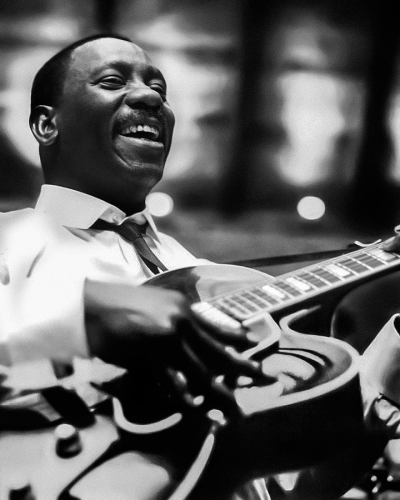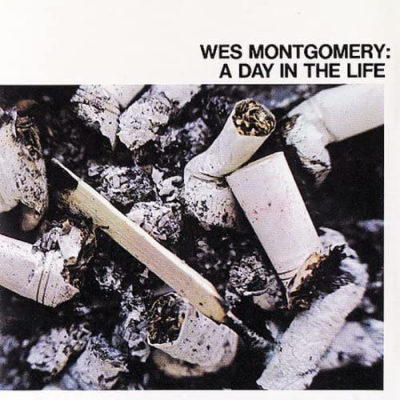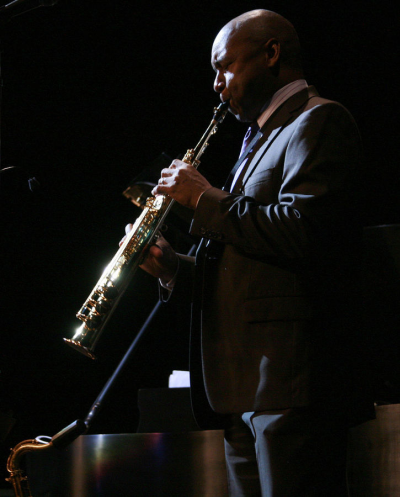.
.
photo first published by Gibson, likely taken by Chuck Stewart. Public domain, via Wikimedia Commons

Wes Montgomery, c. mid-1960s
.
___
.
Traveling Wes
Weren’t you the epitome of cool
With the hitchhiker’s thumb?
Travel, Wes. You sure knew how
To travel.
Must be why everybody ended up on Sunset, across the
Street from a Hollywood high. You’re the cool ambiance guy
So who wouldn’t want to go your way?
Bump this music on backyard barbeque speakers
Sixties cool ambiance as you told that
Gibson what to say. Shoot, we’d
Travel with you all day
(This is the shortest way to get to a groove.
Head-bopping personification
Of chill, mostly self-taught and pitch perfect
What a smooth glide to Sunset! You always knew
How to travel, Wes. Bump that ambiance with
The hitchhiker’s thumb. No question,
I’m going your way.
.
by Connie Johnson
.
.
___
.
.

Wes Montgomery’s 1967 album A Day in the Life [A&M]
.
___
.
Wes Montgomery
From Bop to Pop…Revisiting A Day in the Life
by Jason Young
.
…..When Wes Montgomery, the most influential jazz guitarist of the 1960’s, introduced a new audience to his playing with the seminal jazz-pop album A Day In The Life, he received fanfare and criticism. Entering the golden age of AM radio with jazz versions of counter-culture favorites, the commercially savvy album presented jazz to a generation reared on transistor technology. With AM radio music directors now turning their attention to commercial jazz, Wes’s partnership with famed producer Creed Taylor proved good timing.
…..Featuring The Beatles’ hit songs “A Day In The Life” and “Eleanor Rigby,” along with other Top Forty hits, the bebop guitarist shared the airwaves with pop singers like Petula Clark, Bobbie Gentry and Lulu.
…..His transition from hard bop jazz to pop – although receiving its fair share of criticism over the years – is considered by many to have inspired smooth jazz artists like George Benson, whose popular hit “Breezin” reflects Wes’s influence. Record Review jazz editor Scott Yanow wrote; “In most cases, the guitarist [Montgomery] did little more than play the melody, using his distinctive octaves, and it was enough to make him saleable.”
…..Although penniless, Wes had become a star before he signed with the hit-making producer Taylor. A late start (Wes was in his 40’s), his album The Incredible Jazz Guitar of Wes Montgomery earned him much-needed recognition, and is hailed by jazz fans as his pinnacle.
…..“Setting him apart from the rest, this recording established Montgomery as the most formidable modern guitarist of the era, and eventually its most influential,” the music critic Michael G. Nastos wrote.
…..A tireless and financially strained Indianapolis club performer, Wes signed with Orrin Keepnews of Riverside Records at the prompting of famed saxophonist Cannonball Adderley, who recorded for the label. After four years with Keepnews – a time jazz critics consider to be Wes’s most creative – Riverside was experiencing financial trouble. With his label now bankrupt, Wes’s manager John Levy approached Taylor to sign the guitarist to Verve. A prolific jazz producer with scores of artists to his credit, Taylor’s partnership with Wes would merge jazz and pop genres, gaining airplay and chart success.
…..Intent on making commercial jazz records, the visionary Taylor recorded six Wes Montgomery albums released under the Verve label, including Movin Wes, Bumpin, and California Dreaming, before switching to A&M.
…..Using clever string arrangements by Don Sebesky, A Day In The Life – released in September of 1967 – climbed the Billboard charts, eventually reaching the #1 position for Billboard Jazz Albums. Recorded over three days at Van Gelder Studio and boasting the outstanding lineup of pianist Herbie Hancock, bassist Ron Carter, drummer Grady Tate, and percussionist Ray Berretto, the musicianship provides a solid backdrop for Wes’s melodic playing.
…..Despite criticism for catering to easy-listening audiences, the album features the guitarist’s biggest hit, a rendition of the #1 best-selling song of the summer of 1967, “Windy,” by the California rock band The Association. Wes’s version reached #44 on the Billboard Hot 100, making him a staple on Top 40 radio, and frequently performing the song during television appearances.
…..Riverside’s Keepnews reflected on the guitarist’s financial dilemma; “In the first year he’s working, a couple of records come out and attention is paid to him. All of a sudden, he’s the new star on his instrument…His reaction to that was to complain about the fact that he still wasn’t working very much or making much money. I said to him specifically, ‘Hey Wes, a year ago you were unknown and broke. Now you’re a star and broke. That’s tremendous progress.’”
…..On his time working with Wes, Keepnews reflected; “Literally, we were not working to sell records. We were working to present the artist in the best possible way and to get the most out of the artist as a performer, as a player. Probably, it would have been a nice idea if we had been a more aggressive sales unit. On the other hand, when Riverside disappeared and he went onto his Verve and A&M associations, quite clearly the goal was to turn him into the biggest seller possible. He was handled like a pop artist.”
…..Yanow described hard bop in the late 60’s as “running out of gas,” stating that major jazz labels like Blue Note were declining in sales, and that the fast rise of soul jazz and fusion replaced bop’s prevalence within jazz. Wes’s move from jazz to pop – still subject to debate – and his album A Day in The Life, continues to please listeners, and fires up jazz critics.
…..One year after the release of A Day in The Life, Wes would be gone, passing away unexpectedly of a heart attack at the age of 45.
.
.
___
.
.

Connie Johnson was born and raised in Los Angeles, CA. She began writing poems in 1976, but chose to pursue a career in music journalism. Since 2020, her focus has returned to poetry and her work has appeared or is forthcoming in Iconoclast, Haight-Ashbury Literary Journal, Jerry Jazz Musician, Voicemail Poems, Mudfish and Exit 13.
.
.
___
.
.
Jason Young is a native of Philadelphia, Pennsylvania, and a 40-year music veteran. A guitar prodigy at the age of eight, he dedicated his life to writing music, audio engineering, and becoming fluent in drums, piano, mandolin, banjo, dobro, and bass. He is a fan of blues piano, and enjoys playing piano in the styles of his heroes, Memphis Slim, Johnny Johnson, and Otis Spann. Having written a song with Kid Rock for the Rebel Soul album adds to his list of musical accomplishments. He is also passionate about music history, and enjoys writing about musicians. Today he focuses on writing articles for his Blue Railway Podcast website.
.
.
Listen to the 1960 recording of Wes Montgomery playing “Polka Dots and Moonbeams,” from the Riverside album The Incredible Jazz Guitar of Wes Montgomery [Universal Music Group]
.
.
Listen to “Windy,” from Wes Montgomery’s A&M album, A Day in the Life [Universal Music Group]
.
.
___
.
.
Click here to read and listen to The Sunday Poem
Click here for information about how to submit your poetry, short fiction, or essay
Click here to subscribe to the (free) Jerry Jazz Musician quarterly newsletter
Click here to help support the ongoing publication of Jerry Jazz Musician, and to keep it commercial and ad-free (thank you!)
.
.
___
.
Jerry Jazz Musician…human produced (and AI-free) since 1999
.
.
.








































